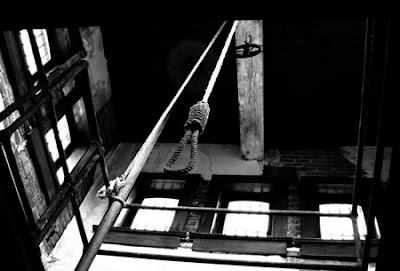Plea in Supreme Court wants execution by hanging to be judged against global opinion and evolving standards of human decency
The last execution carried out by the state was that of Yakub Memon, in 2015. Convicted for his role in the 1993 Bombay blasts case, the charted accountant was hanged at the Nagpur central jail. Relatives weren’t allowed to attend the event. Instead, his death was witnessed only by a magistrate, a doctor, and a few prison officials.
Now, nobody but the people present at the spot know how Memon suffered through his last moments among the living. Did death come instantly, or did he suffer? They aren’t saying.
Over 1,414 convicts have been hanged since Independence, but there is just as little information on how agonising their final moments were. So, why has this issue suddenly become relevant now, after all these years?
A public interest litigation has once again ignited a moral debate on the question of hanging a convict by the neck till his eventual death. The petition, filed in the Supreme Court, wants execution by hanging to be judged against the backdrop of international opinion and evolving standards of human decency.
Hanging has been India’s favoured mode of execution for over 100 years now, although the armed forces also regard death by firing squad as a legal way to end a convict’s life. The question of the noose was addressed by the Supreme Court in the Deepa vs Union of India judgment in 1983, almost 34 years ago, but the horror that accompanies hanging was explicitly expressed only in this one.
Justice Bhagwati, in his minority judgement, provided a graphic description of the execution process. Here’s an extract:
“The day before an execution, the prisoner goes through the harrowing experience of being weighed, measured for the length of (the) drop to assure breaking of the neck, the size of the neck, body measurements, et cetera. When the trap springs, he dangles at the end of the rope. There are times when the neck does not break, and the prisoner strangles to death. His eyes almost pop out of his head, his tongue swells and protrudes from his mouth, his neck may or may not break, and the rope claims large portions of skin and flesh from the side of the face. He urinates, he defecates, and droppings fall to the floor while witnesses look on, and almost all executions have had one or more person fainting or being helped out of the witness room. The prisoner remains dangling from the end of the rope for eight to 14 minutes before the doctor climbs up a small ladder and listens to his heartbeats with a stethoscope and pronounces him dead.”
While the case primarily tested the constitutionality of death by hanging, it also discussed alternative methods of execution. However, the eventual conclusion was that hanging is indeed the most humane, painless and speedy way to execute a felon.
Ruling in defence of hanging, the judges said: “Hanging by rope is not a cruel way to execute the death sentence. The mechanics of hanging have undergone significant improvement over the years, and it has almost been perfected into a science. The system is consistent with the obligation of the state to ensure that the process of execution is conducted with decency and decorum, and without causing degradation or brutality of any kind.”

The court then looked into alternative methods of execution that are in vogue elsewhere. Electrocution, lethal gas, shooting and lethal injection were all dismissed as likely alternatives because they were found to have no “demonstrable advantage” over hanging.
The option of electrocution was rejected because it was not an “entirely painless” mode of execution. “Besides, power cuts have been considered as an impediment in the use of the electric chair in America. With the frequency of power cuts in our country, the electric chair will become an instrument of torture,” the judges said.
They also refused to consider lethal injection as a mode of execution, stating that it was by-and-large an untried method. The firing squad idea was shot down on the grounds that it was an unreliable technique, and not a very “civilised” way of ending somebody’s life. The gas chamber method was likewise dubbed as a complicated one that would expose the prisoner to an uncommon level of torture.
Nevertheless, it has to be acknowledged that a lot has changed since the 1983 judgment. Hanging as a mode of execution has come under severe scrutiny.
In 2003, the Law Commission of India took it upon itself to study the pros and cons of hanging as the choice mode of execution. This exercise, which invited comments on the matter from judges, police and members of the legal fraternity, threw up some astounding results.
According to the study, as many as 80% of the judges said the mode of executing the death penalty should be changed. They were all in favour of the lethal injection. However, this method is also known to have its problems, with several instances of botched-up executions cropping up in recent times.
The jury is still out on the pertinent question of, if not hanging, what is the best way to legally kill a person? The debate, at least, has begun.
Source: Hindustan Times, Ashok Bagriya, October 17, 2017
⚑ | Report an error, an omission, a typo; suggest a story or a new angle to an existing story; submit a piece, a comment; recommend a resource; contact the webmaster, contact us:
deathpenaltynews@gmail.com.
Opposed to Capital Punishment? Help us keep this blog up and running! DONATE!
"One is absolutely sickened, not by the crimes that the wicked have committed,
but by the punishments that the good have inflicted." -- Oscar Wilde












